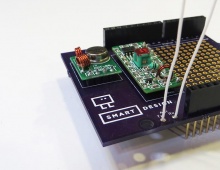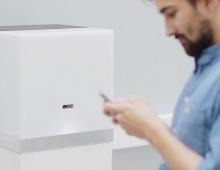You may ask yourself what place a YouTube channel has in a design portfolio, but bear with me while we take a visit to the world of Switch & Lever!

It started back during 2013 while I was away on internships in San Francisco and later in Cambridge. I had gotten used to whenever I had spare time to go to the school workshop at Umeå Institute of Design and make things, anything from little electronic devices using Arduino to doing woodworking and even metal shaping of various kinds. While away from school my opportunities to do such was limited, so I instead got addicted to watching other people making projects on YouTube while still making whatever small things I could. I found YouTube to indeed be a great platform for sharing techniques and getting input, luckily it’s not all Miley Cyrus, Minecraft videos and whatver else may be popular at the moment.

Once back from the internships in early 2014 I decided that I wanted to share what I had learnt though both school and watching countless hours of makers on YouTube. I love helping people, teaching methods, sharing what I make, so starting up a YouTube channel of my own seemed like a natural development. Said and done, with a video making a small brass hammer the Switch & Lever YouTube channel was born.

From there it’s continued, and since then a video has been released on the channel roughly every two weeks. Many of the videos deals with workshop projects using a wide variety of machinery, some easily obtainable for the home machinist, some not. There are electronic projects using Arduino, both useful and fun, trying to keep a good mix between teaching and entertaining. I try to narrate my videos in a fairly pedagogical fashion to get the important points across to the viewer as well.
This whole experience also mirrors the work I want to do in the future, working both with interaction design but also being very hands on with what I do. More than half of the enjoyment in designing is getting your hands dirty and building something tangible, and it definitely shows in the final result as well. It also mirrors that I at some point in the future want to teach, at least part time, to other prospective design students. As design schools around the world are slowly shutting down their workshops and focus instead of computer screens I fear that the skill of doing physical design will diminish and as far as the experiences we have as consumers will be worse off for it. A mouse, or even a Wacom pad, is no substitution for your hands and your eyes.

Hopefully you’ll check out the channel and follow me on the journey of exploring this field together.
Thank you!










